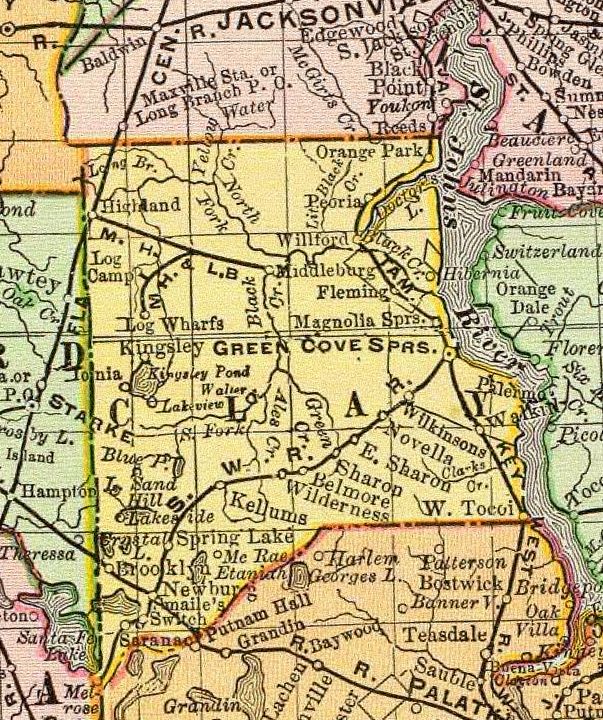A second important line was the narrow-gauge GCS & Melrose line from Green Cove Springs. Its main purpose was likely to transport logs and lumber from the interior of the Clay County to the mills and other transport points in Green Cove Springs. Evidence of this appears in an 1889 dispute between local timber operations and the owners of the railroad who were apparently charging too much ($2.62 on average per thousand hauled).
This railroad line extended six miles west in 1882 (see Board of Improvement Minutes), ten miles in 1884, then to Sharon (March, 1883), then later to Belmore (1886), and finally all 33.92 miles were laid to Melrose in 1890. The railroad, mainly owned by Ozias Buddington, went into receivership in 1886, but did resume operations.
General Clinch helped develop this line, so its terminus was at his Bayard Tract south of Green Cove Springs. The railroad was granted odd-numbered sections within six miles of the track all along the line. By 1889, 7,781 acres had been conveyed to the railroad and it begged for the remaining 30,618 acres it was owed. The Board responded by ordering swamp lands within twenty miles of the track to be given instead. This probably caused great difficulty for the company. Nevertheless, a host of new towns sprang up along the line starting in 1882. Governor Francis Fleming watched these proceedings while he was on the Board of Improvements. When he left the Board, he became an agent for the GCS & Melrose successor (The South Western Railroad Company), at which time he agreed to give up some land in exchange for being able to remove the rails. Many areas became ghost towns as the line went into receivership again in 1899. When it reached only so far as Belmore before being completed to Melrose, it was called the Green Cove Springs and Midland Railway (1888 Comptroller Report, pg 19). It carried the mail from Green Cove Springs to Melrose beginning on March 21, 1890.
An employee, John Walsh, died when the train jumped the tracks Apr 28, 1888. It was, by then, operating as the Western Railway, or Western Railroad. By 1895 it was the Southwestern Railroad (Comptrollers Report). It suffered greatly when freight declined after the 1895 freeze, and timber, by now, had been nearly completely harvested. By 1899, it ceased to exist altogether. The line is shown as the SWRR on the map. Ozias Buddington was an early owner, perhaps interested because of his sawmill business.




